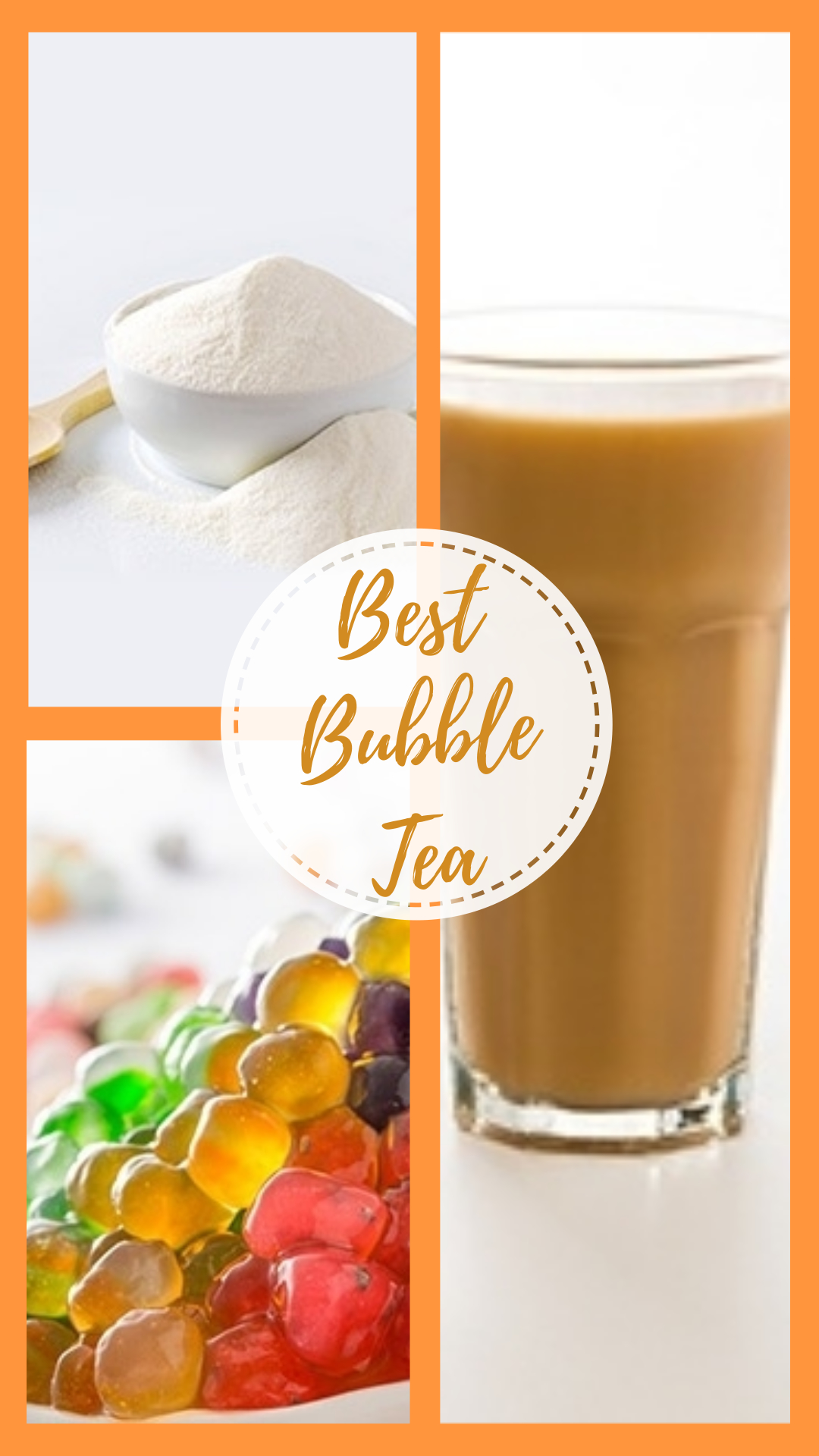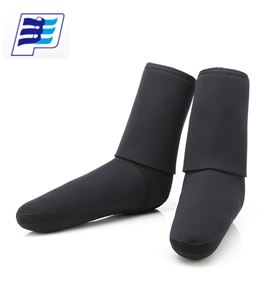
The bubble tea is made with 4 ingredients:
- Flavor: flavored powder, flavored syrup, fruit purees or fresh fruit
- Creamer: powder creamer, half-n-half, full milk or other creamer
- Sweetener: sugar, simple sugar syrup, fructose, or honey. Sugar free sweeteners can be used such as Aspartame, Stevia and Sucralose.
- Liquid: water, tea or milk
Tapioca Pearls or the “fun” stuff on the bottom adds a new element to the bubble tea beverage. Tapioca is distinctive, chewy and ultimately addicting. Tapioca may be the traditional black or the new colored tapioca pearl. For an added twist, coconut meat can be added for a new flavor dimension.
The Perfect Bubble Tea Experience
Drinking the Perfect Bubble Tea includes the perfect texture of the tapioca bubbles or “Boba.” The perfect texture meaning is not too soft and not too hard. The perfect chewiness is similar to a fresh gummy bear. In addition, the drink should be smooth and tasty. The cool beverages should have a good taste and a refreshing feeling. The warm beverages should be at the right temperature to warm ones inside. Bubble drinks come in a variety of flavors and textures. Some are made with fresh fruit, some with the Bubble Tea Supply flavored powders and some with the flavored syrups. However the drink is mixed, it should not be watery. There should be a clear and distinct flavor with every drink enjoyed with bubbles or “Boba” to chew down with the drink.
Flavor of Bubble Tea
Cream Flavored Powders vary in quality, amount of servings and price. They are separated into A, B&C grades. We recommend the “A” grade due to better taste, texture and cost per serving. “B&C” grades are the most common in the marketplace and are referred to as market grade.
Cream Flavored Powders are created from three main ingredients:
- Fruit Flavoring
- Creamer
- Sweetener
Bubble Tea Supply’s Premium Grade “A” powders have a strong fruit flavoring because the juices of the fruit are used to create the flavor. The percentage and type of fruit flavoring used differs between the Premium Grade “A” and market grades “B&C”. Some of the Premium Grade “A” powders contains as much as 75% of the fruit flavoring. This gives your bubble tea a more natural, real and creamy “fruit” taste. Our market grade “B&C” products have less fruit flavoring, however, still replicates a bit of the real fruit. In our market grade “B&C” products, there is a higher percentage of creamer and sweetener added.
The sweetener that is used also makes a difference in the flavor of the drink. Premium grade “A” powders have a much more natural taste. Sometimes when lower grade sweeteners are used there may be an artificial taste or even an aftertaste.
An important thing to know about bubble tea flavored powders are the tricks that companies play. Many suppliers will use high concentrations of inert ingredients such as creamer, artificial ingredients, etc. to make their product cost less. This is very deceiving to the customer when trying to compare powders. The best way to compare is to taste the powders sided by side in the exact same measurements. This is an easy way to know who really has the best product. After you compare our powders to anyone else, we know you will become a lifelong customer.
Tea Flavored Powder is created to provide the traditional flavor of tea without the labor of brewing. The tea powder can be used to make a black milk tea or green milk tea bubble tea drink or can be used with the cream flavored powders mixed with water instead of brewed tea. An example of this is to use one scoop of tea powder with water and cream flavored powder instead of brewed tea. We also have infused tea powders with aromas such as lavender and rose. Both are very popular.
Iced coffee is a very popular drink these days and we have an easy preparation for gourmet coffee drinks. These coffee powders include flavors such as cafe latte and cafe French vanilla.
The Juice Flavored Syrups are a strong thick concentrate used to infuse black or green tea with fruit flavors or for frozen blended bubble tea. Created from the juices of the real fruit, it is hard to tell the difference between fresh fruit and our bubble tea syrups. Some syrup even contains pieces of real fruit in them (i.e. strawberry bits, passion fruit seeds and the like). Most syrup have a sweet and citrus taste, depending on the flavor and provide a light and refreshing taste enhancing the flavor of the tea.
Creamer of Bubble Tea
Although the flavored powder has a milk powder already in the ingredients, using an additional creamer provides body to the bubble tea. We recommend a powdered non-dairy creamer, half n’ half, or milk.
- Powdered non-dairy creamer is available in a variety of brands and seems to fulfill the same taste and body to bubble tea. This is the most common form of creamer used in most bubble tea shops.
Some prefer not to use the non-dairy creamer as it sometimes is more difficult to dissolve in the drink. To get rid of the bits of creamer when preparing the bubble tea, use a warm liquid to dissolve the powders first. Another option if warm liquid is not available is to make sure that the drink is shaken really well. Vigorous shaking will ensure the powders are fully dissolved.
- Half n’ half is another option and adds a thicker body to the drink. When using half n’ half, your bubble tea will taste more like ice cream or a milk shake. Using half n’ half makes the bubble tea rich in flavor and is a favorite among coffee drinkers.
- When using milk, whole milk is suggested. Milk gives your bubble tea a more naturally creamy taste and texture. The thickness of your bubble tea may become thinner. If making a blended bubble tea with milk as a creamer, the drink replicates a fruity milk shake.
Sweetener of Bubble Tea
While the flavored powder already has a sweetener included in its mix, it is recommended to add a bit more sweetener to your bubble tea. These are the most commonly used sweeteners.
- Using white or brown sugar is preferable. These are normally made into simple sugar syrup. The sweetness brings out the fruit flavoring more when the drink is at a cold temperature. Cane sugar and simple sugar syrup is the most recommended sweetener as it adds a more natural taste and adds the perfect sweetness in the bubble tea.
- Fructose is also very popular. Fructose is a sweetener that is taken from the juices of fruits. Fructose provides the bubble tea with a thicker body, yet has a different taste. Fructose is preferred by shops catering to those with sugar sensitivity. Fructose is typically less expensive than pure cane sugar syrup.
- Honey can be used to provide a lighter sweetness to the bubble tea. Once again, the taste and texture are different but preferred by some. Honey can also be used to sweeten the tapioca pearls.
Liquid – “T-E-A” in Bubble Tea:
Although the drink first originated from a mix of real tea and fruit flavoring, this fun drink has recreated itself to being known as a tea, coffee, or smoothie with tapioca on the bottom known as “bubbles.”
Adding tea to the drink is not recommended for all of the flavors. Of course, depending on the taste preference of the customer, you will want to satisfy their taste buds. Black and Green Jasmine Teas have a refreshing sweet taste when flavored syrup or juice flavored powders are shaken with simple sugar syrup. Black milk tea powder can be substituted for brewed tea.
The cream flavored powders create the best flavored bubble tea when shaken with filtered water, creamer and simple sugar syrup. Milk can also be substituted for the water and creamer.
Texture of Bubble Tea
Tapioca Pearls or the “fun” stuff:
The texture of the tapioca pearl is one of the most important parts of making a Perfect Cup of Bubble Tea. There are two colors available, the traditional black tapioca pearl and the new colored tapioca pearl that comes in pastel colors. As another “fun” option, coconut meat with a gelatin-like texture can also be added to the bottom of the bubble tea. Coconut meat is also fun to suck up through the fat straw and will tantalize your taste buds with flavors such as lychee and pineapple. Coconut meat can be used in addition to tapioca or as an alternative.
There are also two types of tapioca pearls available, the semi-cooked tapioca pearl and raw tapioca pearl. The semi-cooked tapioca pearl in its uncooked state is harder making it more resilient to shipping. The preparation time is about 10 minutes less than the raw tapioca and an unopened bag of semi-cooked tapioca will have a slightly longer shelf life. The downside to semi-cooked tapioca is that the pearl is not as chewy as the raw tapioca. Semi-cooked tapioca also loses its chewiness faster than the raw tapioca.
Bubble Tea supply sells raw tapioca in its highest quality to insure you serve the Best Tapioca Pearls. The raw tapioca pearl is recommended because the texture is chewier and will stay chewy longer. You will notice after opening the bag that the raw tapioca pearl is very delicate. If pinching a pearl between two fingers, the pearl breaks easily into powder.
While preparing the tapioca pearl, you want to decide if you would like to serve your pearls harder or soft. Tapioca pearls are served at different consistencies worldwide, and are usually done on preference. It should have a good texture though, not too hard (like an old gummy bear) and not too mushy (like a Juju Bee candy). You can follow our Virtual recipe book under the recipe section to prepare your tapioca pearl at the suggested texture.
When comparing Bubble Tea Supply tapioca pearl with the competition, you’ll notice that Bubble Tea Supply tapioca pearls hold together well throughout the day while retaining a chewy texture. It is not recommended to reuse left over tapioca pearls, as your customers will notice a difference in texture. We compare the tapioca to fried chicken. Fried chicken is very good when it’s first cooked but if you try to serve it the following day it isn’t the same. The same goes for tapioca. If it’s your customer’s first experience with “old tapioca” Bubble Tea, it may be their last!
If you want to find an excellent bubble tea materials supplier, I recommend that you can visit Empire Eagle Food Co., Ltd. – they not only provide bubble tea materials but also tea shop training program. Learn more details, please do not hesitate to contact with Empire Eagle.
Article Source: http://www.bubbleteasupply.biz/bubble-tea-components


